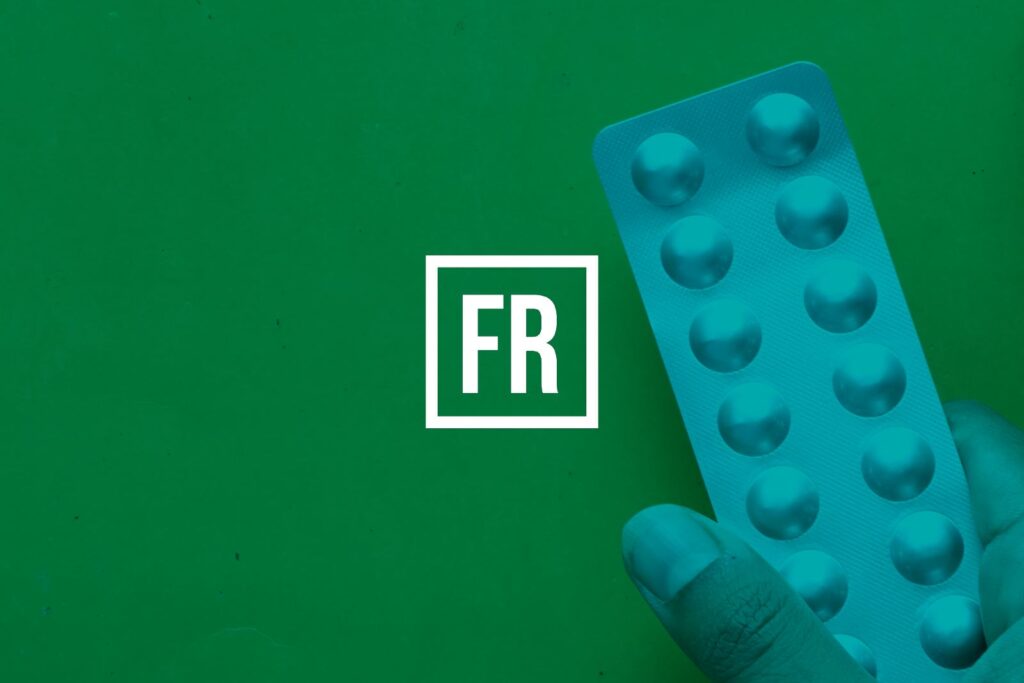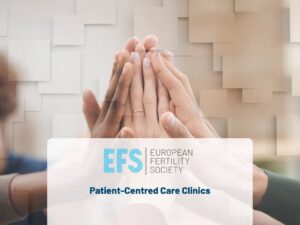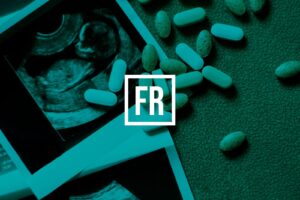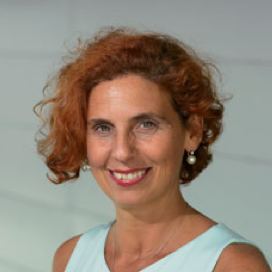Many people considering undertaking IVF have concerns about the potential side-effects of the hormone stimulation medication involved.
Clare: Many thanks Arianna for talking to us at Fertility Road about this important topic. Let’s start with discussing the most commonly used hormone stimulation drugs in IVF? How do Gonadotropins work? What’s their role in the IVF cycle?
Arianna: Ovarian stimulation drugs (also known as Gonadotropins) mimic the hormones produced by the woman’s pituitary gland in order to stimulate the growth of the follicles in the ovaries. The follicles usually contain an egg which will develop and mature under the effect on these stimulating drugs.
These drugs can be “recombinant” meaning that they’re created by high tech pharmaceutical laboratory procedures or “urinary” meaning processed from naturally produced human hormones. Both are equally effective and well tolerated.
There are mainly two categories of drugs used: the follicle stimulating hormone (FSH) and the luteinised hormone (LH). Since it is difficult to extract LH, some drugs use the “so called LH activity” produced by another hormone called human chorionic gonadotropin (HCG). Drugs can contain FSH alone (recombinant or urinary) or a mix of FSH/LH activity (only urinary). Recombinant drugs are usually available as an injection pen but urinary drugs have to be mixed and therefore injected using a syringe. All drugs are administered using a subcutaneous route (under the skin) with a small subcutaneous needle. The dose and frequency of the drugs will depend on the protocol allocated to you by your IVF doctor.
Clare: What are the different Stimulation Protocols most commonly used?
Arianna: There are two main stimulation protocols used in IVF: long and short. Each protocol involves using stimulation drugs as described above.
The long protocol (also known as “down regulation protocol”) involves using injections or nasal sprays (GnRh-analogue agonist) for a minimum of two weeks to achieve the down regulation before starting the ovarian stimulation with the Gonadotropins. It is called “long” because it takes approx 4-5 weeks to get ready for the egg collection.
The short protocol (also known as “antagonist protocol”) involves starting the ovarian stimulation drugs at the beginning of the menstrual cycle and adding a second drug called GnRH analogue antagonist approximately five days after the stimulation starts. The antagonist will be continued until ready for egg collection in order to avoid prematurely releasing the eggs. It is very important to understand that all these drugs mimic our hormones and are therefore time-sensitive; this is why it is important to follow the time-scales set by your fertility healthcare professional.
Clare: What are the most common, mild side effects of hormone stimulation?
Arianna: During the IVF cycle, it’s normal to feel ‘different’ because the hormones given to stimulate the ovaries interfere with your own hormones causing mood changes for instance. Down regulation which occurs during the long protocol is similar to menopause therefore hot flushes or nights sweats can be expected. These symptoms are temporary and will resolve once the ovarian stimulation drugs are started. However, stimulation drugs can also create minor symptoms such as feeling bloated and tired. Exercise might become more difficult and it is recommended to take it easy during this phase of treatment.
Clare: Do the majority of IVF patients experience mild side-effects?
Arianna: Yes, mild side effects are extremely common because hormonal drugs will cause a disruption of the woman’s hormone balance. This is perfectly normal and reversible once the treatment is completed.
Clare: How can patients avoid or minimize these mild side-effects?
Arianna: Generally speaking, awareness is the key. If you are aware of what to expect you can manage better. Another important way to deal with these side effects is not to put too much pressure on yourself during this stage of the treatment. Trying to give yourself some relief and space by reducing work responsibilities might help. Some alternative treatments such as acupuncture might also be helpful. Counselling support is recommended.
Clare: How should patients expect to feel during the hormone stimulation stage of IVF? What’s regarded as ‘normal’?
Arianna: During the stimulation phase it is perfectly normal to start feeling aware of your ovaries in terms of feeling heavier and bloated. This happens because the follicles contained in the ovaries are growing under the effect of the drugs. The ovaries become larger, 2-3 times the normal size and occasionally become uncomfortable or painful. If that happens you should report it to your doctor to make sure that the stimulation is not too heavy, causing what is known as Ovarian Hyperstimulation Syndrome (OHSS).
Clare: Does the presence of mild side-effects determine the outcome of the cycle in any way?
Arianna: In a way it is more reassuring to experience mild symptoms as a result of the stimulation drugs because this is suggestive of the drugs being effective on the ovaries. However, some people experience no effects whatsoever and still have an appropriate ovarian response.
Clare: What are the most serious potential side-effects of hormone stimulation?
Arianna: The most serious drug related complication is Ovarian Hyperstimulation Syndrome (OHSS). In rare cases, OHSS can be life threatening. Fortunately, the incidence of the severe form of OHSS is less than 1% but moderate OHSS can range between 3-10%.
Severe Ovarian Hyperstimulation Syndrome (OHSS) presents the following symptoms: severe abdominal pain and bloating. Difficulties breathing, reduction of urine output and unable to eat and drink associated with sickness (vomiting). If a patient experiences any or all of these symptoms they must contact their IVF doctor immediately.
Moderate Ovarian Hyperstimulation Syndrome (OHSS) presents the following symptoms: abdominal discomfort, bloating and constipation. Feeling sick, occasionally unable to eat and/or vomiting. Feeling short of breath especially in the evening. If a patient experiences any or all of these symptoms they should contact their IVF doctor/clinic immediately.
Clare: How can these serious and moderate side-effects be treated?
Arianna: Moderate OHSS does not require hospitalisation in most cases but careful outpatient monitoring of the patient’s symptoms via blood tests and ultrasound scans is important. Usually a high protein, low salt diet and fluid intake between 2-3 litres is enough to resolve the symptoms but sometimes anti sickness and blood thinner need to be administered.
The severe form of OHSS requires hospital admission to monitor kidneys and liver function alongside breathing and cardiovascular symptoms. Intravenous fluids are needed to make sure that appropriate hydration is maintained. Blood thinner to reduce the risk of blood clots is mandatory.
Clare: Is there anything patients can do to decrease their chances of serious side-effects?
Arianna: Despite your clinician’s best efforts to plan the right dose and protocol for you, sometimes the response to the fertility drugs can be unexpected and therefore lead to OHSS. Luckily the syndrome has various degrees and it can be identified and managed at the earliest stage so that it does not develop any further. It is very important that you communicate with your clinic should you experience any symptoms of OHSS: abdominal pain and bloating, sickness, reduction in the urine output and difficulty to breath. High protein diet with low salt and appropriate fluid intake will help. Extreme exercise at the Stimulation phase of an IVF cycle should be avoided to reduce the risk of ovarian torsion or rupture leading to internal bleeding.
Clare: Does the presence of serious side-effects lead to the halting of an IVF cycle?
Arianna: Very rarely the IVF cycle will have to be cancelled due to high risk of OHSS. In most cases the treatment can go ahead by reducing the dose of stimulation drugs or sometimes stopping these drugs (so called ‘Coasting’). Women at risk of developing OHSS should be given the short antagonist protocol, which has the possibility of using an ovulation trigger shot compatible with reducing the OHSS risk to less than 1%, therefore making the procedure very safe. Elective embryo freeze might need to occur should the risk of OHSS be deemed too high to continue.
Clare: Are there long-term health risks associated with the hormone stimulation involved in IVF?
Arianna: This is an area of continuous research since 1978 when the first IVF baby was born. Data so far is reassuring but long surveillance is needed as concluded in the book that I have recently edited: Long Term Safety of Assisted Reproduction.
Clare: Is there any link between IVF treatment and uterine or ovarian cancer?
Arianna: To date no link has been established with any of the female cancers including breast as well as uterine, cervical and ovarian. However, research is ongoing and large series are constantly reported to the annual scientific meetings and published on the Reproductive Medicine journals. A comprehensive summary of the latest evidence on this topic can be found in Chapter 2 (entitled: ‘Evidence of the long term safety of ART and fertility drugs regarding cancer risk’) in the book that I have recently edited: Long Term Safety of Assisted Reproduction.
Clare: What are the main health risks associated with IVF?
Arianna: IVF risks are not only related to fertility drugs but also to the actual procedure. For instance, the retrieval of the eggs is a small surgical procedure involving passing a fine needle through the vagina wall into each ovary with potential bleeding or injuries to internal organs. These side effects are extremely rare (less than 0.1%) but infections are more common hence antibiotics prophylaxis is recommended. The process of transferring the embryo/s is safe but can be complicated by multiple pregnancies or ectopic and miscarriages. Finally, some patients experience high level of stress as a result of the treatment leading to anxiety and depression. More on this topic can be found in Chapter 18 (entitled: ‘Psychological effects of undergoing ART’) in the book that I have recently edited: Long Term Safety of Assisted Reproduction.
Clare: Are older women (40+) undertaking IVF more at risk?
Arianna: Generally speaking yes, but the degree of risk depends on whether they are using their own eggs or donated eggs. Donated eggs will reduce the risks of miscarriage but pregnancy complications such as preeclampsia and gestational hypertension have been reported in some recipients. If using their own eggs, the success rate is very low. These patients experience a risk of miscarriage or molar pregnancy at around 40% in addition to an increase risk of fetal abnormalities. More information can be found in Chapter 9 (entitled: ‘Obstetrical risks and pregnancy outcomes specific to patients with very advanced maternal age (over 45)’ in the book: Long Term Safety of Assisted
Reproduction.








